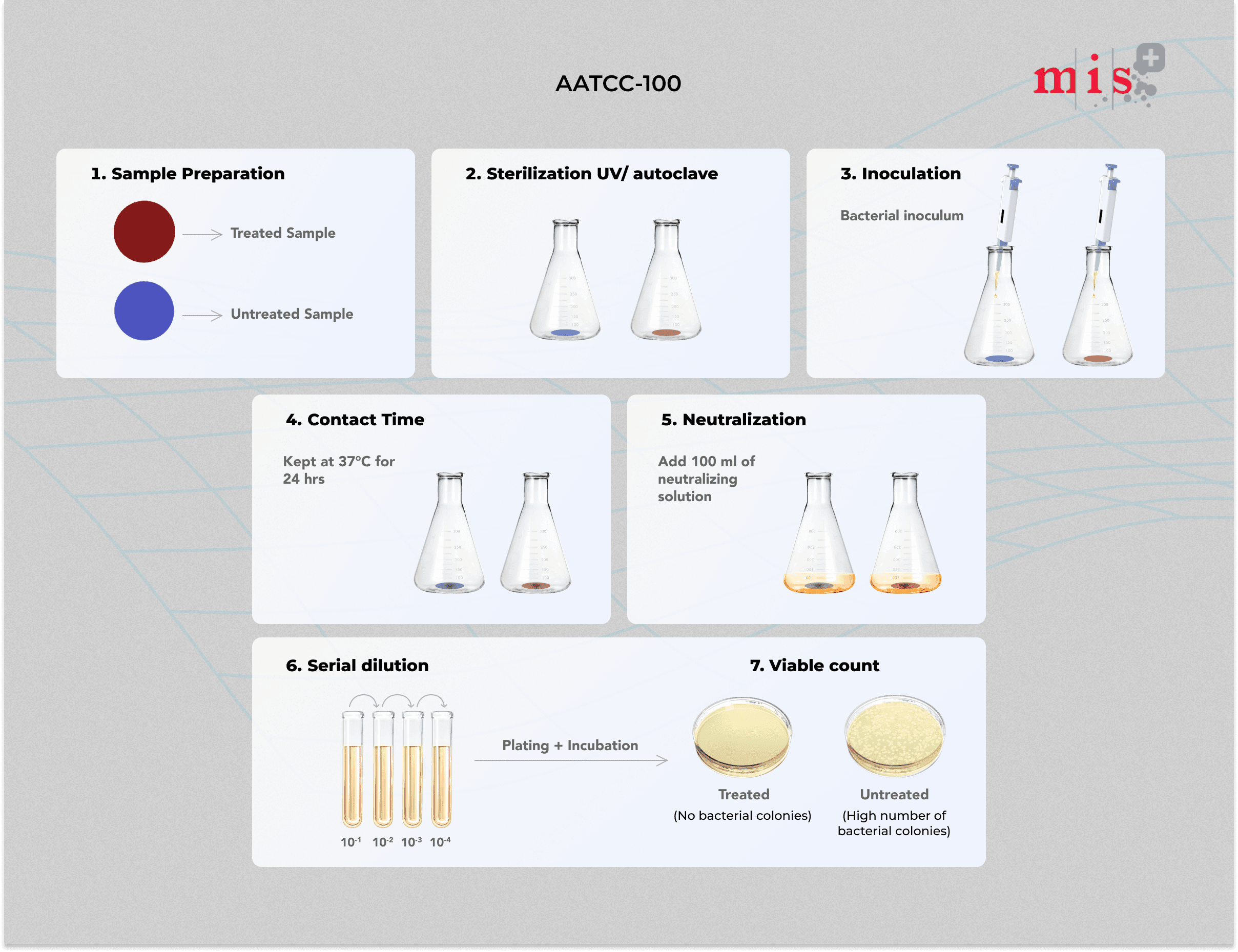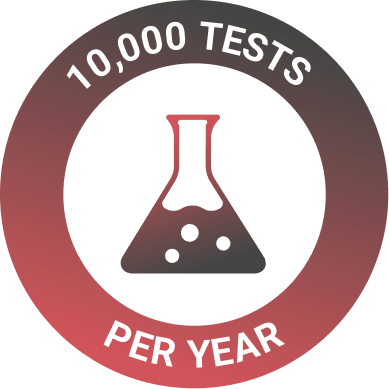AATCC 100 : 2019 – Test Method for Antibacterial Finishes on Textile Materials
The AATCC 100 test method is a quantitative test method used to determine the efficacy of antibacterial finishes applied to textile materials. Fabrics treated with antibacterial finishes offer protection to the users from harmful bacteria meanwhile reducing the risk of transmission of diseases.
AATCC 100 test method provides the evaluation of the bactericidal (bacterial killing) and bacteriostatic (inhibition of bacteria growth) activity of fabric material over a contact period of 24 hours against the test bacteria.
In this method, microbial concentrations are standardized, and bacteria are provided with nutrients throughout the incubation period. If the test fabrics do not have strong antimicrobial potential, then this will allow bacteria to flourish and grow.
Similar to the AATCC 100 test, JIS L 1902 is a Japanese Industrial Standard test method to evaluate the antibacterial activity of textile products.
AATCC 100 Test Method
1. AATCC 100 test is performed with both the antibacterial treated (test) and non-treated (control) samples of the fabric material.
2. The amount of the inoculum used for this test is 1.0 ± 0.1 mL. This ensures the easy enumeration of bacteria at “o” contact time for control.
3. After inoculation (0 contact time), a neutralizing solution is added to half of the samples to suppress the bactericidal action and to maintain the right pH balance. And remaining samples are incubated at 37 °C ± 2 °C for 18h to 24h.
4. After incubation, neutralizing solution is added to the samples. Components are shaken either by using hands or a vortex to ensure proper mixing.
5. Serial dilutions of neutralizing solution are made and plated to enumerate the remaining bacteria.
6. Antibacterial activity is determined by comparing the reduction in viable count of bacteria on the treated sample with the untreated sample.
7. This procedure tests both bacteriostatic activity (inhibition of multiplication) and bactericidal activity (killing of bacteria) of the antimicrobial test agent. The hydrophobic characteristic of fabrics can affect the antimicrobial activity test results obtained by the AATCC 100 test method.

We are a global testing service provider in the sphere of bacteriology, virology, entomology, and odor testing. We use advanced testing techniques to run our testing procedures efficiently. Our constant focus is to provide fast and accurate results at an affordable price.
If you are interested in finding more information about our testing services or want to get a quote for AATCC 100, contact us here.
FAQs
The AATCC 100 test method is used to quantitatively determine the efficacy of antibacterial finishes applied to textile materials.
The AATCC 100 is a quantitative test method used to determine the antibacterial effectiveness of a textile or porous material, such as paper filter media and tissues.
The AATCC 100 test takes 3 to 4 days to complete.
At Microbe Investigations, we understand the need for accuracy and speed. We test for the AATCC 100 using the following viruses: Pseudomonas aeruginosa (ATCC 15442), Escherichia coli (ATCC 8739), Staphylococcus aureus (ATCC 6538P), Enterococcus hirae (ATCC 10541), Klebsiella pneumoniae (ATCC 4352), MRSA (ATCC 33591), Salmonella enterica (ATCC 10708), Candida Albicans (MTCC 3017). Additional strains can be added on request.
Contact us for more information
Explore Other Tests
ASTME2149 | AATCC-100 | JISZ2801 | JISL1902 | EN 1276 | ISO 22196 | ISO 20743 | ISO 846 | ASTM E2180 | AATCC 147 | ASTM D7907-14 | ASTM E3031 | ASTM G29 | EN 16615 | EN 13697 | PAS 2424 | EN 1040 | EN 14349 | EN 13727 | EN 14561 | ASTM G22 | ASTM E1153 | ASTM D2574 | AATCC 174 | EN 14563 | EN 13704 | EN 1499 | EN 1500 | EN 14347 | EN 14348 | EN 1656 | EN 16437 | EN 12791 | ASTM E1174 | ASTM E2362
Antifungal Testing
AATCC 30 | ASTM G21 | EN 1650 | EN 1657 | EN 13624 | EN 1275 | ASTM C1338 | ASTM D5590






